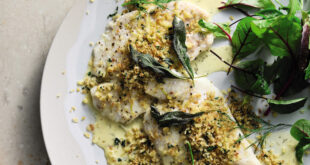It’s a funny relaxed time of year; the festivities are over yet there is still a holiday feel. Many people haven’t gone back to work yet, the school year hasn’t started, there are summer activities happening all over the place, cricket to watch, piles of good books to be read whilst lying in a hammock in the shade and yet more statutory holidays only weeks away. I really enjoy the informality that creeps into mealtimes about now; long lunches in the sun; evenings sharing the results of a friend’s day’s fishing or diving; barbecues with big salads straight from the garden; picnics either by the sea or somewhere exotic or even under the trees down the garden. Now is the time I like to get down my oldest kitchen implement and in a very relaxed way, start cooking.
Most people have heard of, if not eaten something called paella, indeed it is one of the best known dishes to come out of Spain but sadly, like Italian pizza it has suffered in the hands of those who, often with little understanding or respect for the dish, wish to commercialize and complicate something simple and traditional; properly prepared with carefully chosen ingredients however, it can be ambrosial, the comfort food of the gods. Originating, it is said, from a region on the Mediterranean coast of Spain, it is most closely associated with Valencia, a place rich in history having been founded as a Roman colony and later invaded and settled by the Moors, both civilizations incidentally contributing to the dish we know as paella, the Romans with the shape of the paella pan and the Moors by bringing rice to the region.
The recipes for paella are legion with every town, village, family and cook claiming theirs as the correct/best/original version. A few things they do seem to agree on are: the rice must be short grain, preferably something like the Spanish Bomba or Italian Arborio; the oil used must be olive oil and it should be cooked in a traditional paella pan. As to the last, I have had my paella pan since I was fifteen and after nearly half a century, oiled and cared for, this cheap, old, shallow pan of thin metal bought in a Spanish market still makes the best paella. The pans, like the rice and oil, are easily available in New Zealand and not too expensive.
This recipe is a tried and true one:
Paella Valenciana
3 cups good chicken stock
3 cups water
¼ tsp saffron threads
A sprig or two of fresh rosemary
1½ tsp sea salt
8 tbsp olive oil
8 boneless skinless chicken thighs cut into 4-5cm pieces
8-10 boneless strips of pork belly cut into 3cm pieces
2 red capsicums seeded and coarsely chopped
2 medium onions chopped
8 cloves of garlic finely chopped
300g whole green beans (frozen will do)
200g baby peas (frozen is good)
1 tin artichoke hearts (optional)
400g tin chopped tomatoes in juice
3 tbsp chopped parsley
1 tsp Spanish smoked paprika (the sweet one)
3 cups Bomba or Arborio short-grain rice
A lemon for serving
Preheat oven to 200˚C
In a saucepan heat the stock, water, saffron, rosemary and salt to boiling then turn very low and remove and discard the rosemary sprigs. Keep hot.
Heat the oil in the paella pan (you might need to use two burners or a wok ring would be good) and over high heat cook the chicken and pork until browning, about 5 minutes. Add the capsicums, onions and garlic and cook until softened. Still on high, add the beans, peas and artichokes (if using) and cook for about 3 minutes. Add the tomatoes with their juice and the parsley, cook for a minute or so then add the smoked paprika and stir.
Stir in the rice, mixing it well with the other ingredients. Pour in the hot stock and boil for about 5 minutes, add more salt if required and continue to boil stirring occasionally until the rice has taken up most but not all of the liquid. (NOTE the dish is not stirred again after this!)
Transfer the pan to the oven and cook uncovered for about 15 minutes until the rice is just al dente.
Remove the pan from the oven and cover the top with foil. Let it sit for 10 minutes until the rice tastes cooked. Place the pan over a high heat for a minute or two to form a crust of rice on the bottom, taking care not to burn it. The rice crust or socarrat is considered a special part of paella, a real treat.
Remove the foil, decorate with lemon wedges and serve in the pan.
Serves 6-8

Don’t be daunted by the list of ingredients, it takes no longer to cook than many other dishes, and there is only one pan to wash. It needs no accompaniments or side dishes, in fact it earlier days it needed no dishes at all as it was customary for everyone to help themselves straight from the pan. It was originally cooked over an open fire so it is simple to do it on a barbecue. It can be made with fish, prawns, mussels and squid, chorizo, rabbit, snails and lamb and using aubergines, mushrooms, pumpkin and courgettes, the vegetarian versions are so good.
So there you are… holiday cooking at its best! ¡Buen provecho!









Join the Discussion
Type out your comment here:
You must be logged in to post a comment.